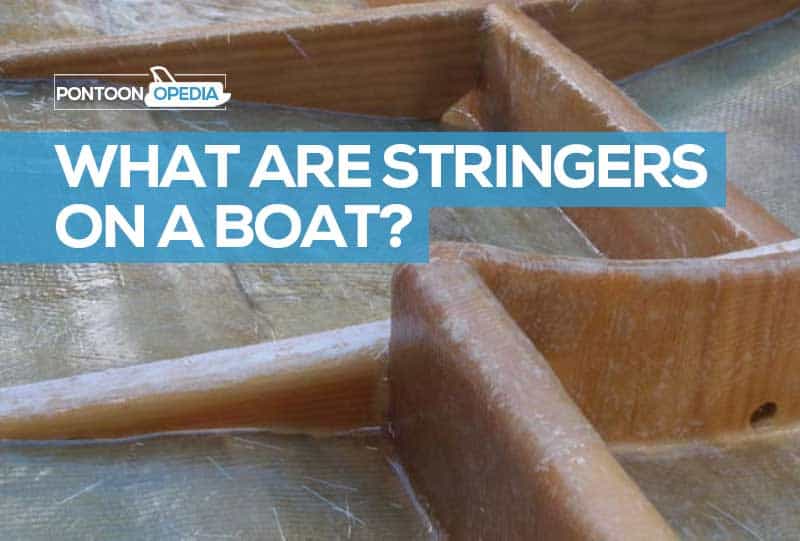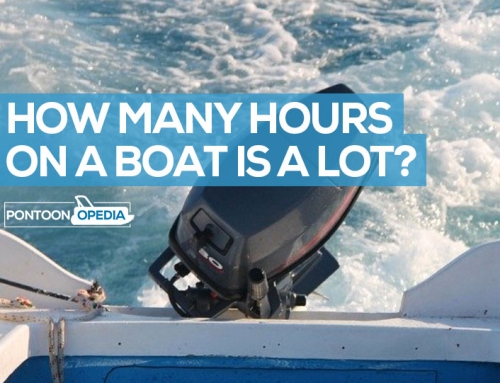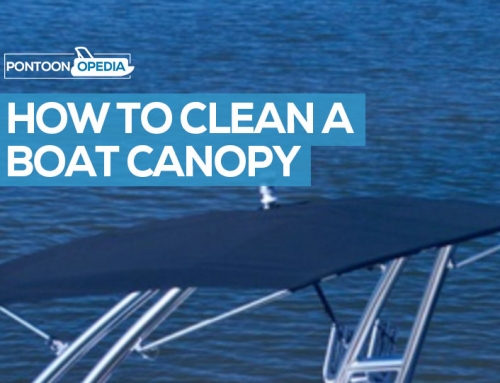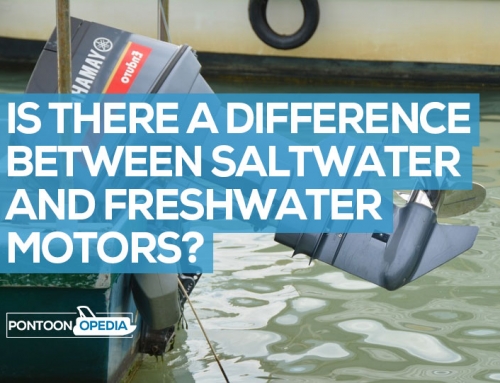I was talking to a friend last week, when he told me that the stringers on his boat needed repaired. I’d never actually heard of them before, so did a little research and found out it’s not only men who doesn’t know what stringers are on a boat. Here’s the answer I found:
Boat stringers are wooden lengths typically found in older boats or pre-fabricated fiberglass molds in newer vessels. They are designed in a lattice or grid system to create a supporting structure underneath a boat deck. Stringers are similar to how joists would hold up the floorboards in a house.
Boat stringers will often need to be replaced and repaired as they can become stressed over time. They can start to degrade due to the impact they are put under, plus rot if constructed from wood.
What do wooden stringers look like on a boat?
Wooden stringers are found in older boats but are still used in some more modern craft. Boat builders would use plywood to build stringer support systems.
This still happens to this day, and the structure will then have fiberglass frames or hats placed over them and can also be laminated.
Here’s what wooden stringers look like in a boat:
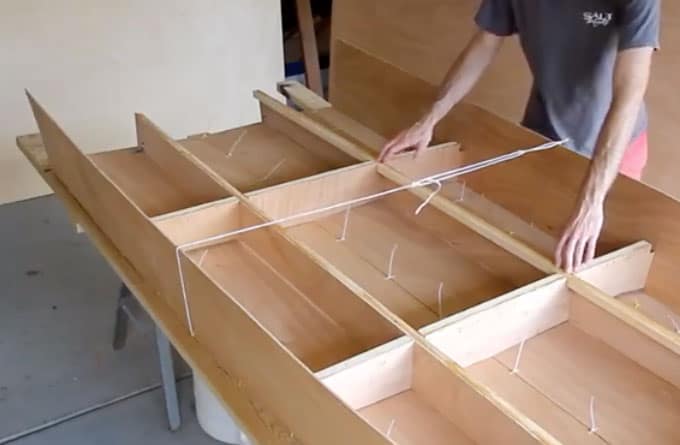
In this example, the wooden stringers are the 2 wooden lengths running from front to back of the boat.
The photo above was taken from this video on YouTube which shows how to install stringers on a boat.
What do fiberglass and laminated stringers look like?
Wooden stringers will often be laminated or covered with fiberglass or can be made completely from fiberglass. Here’s what a fiberglass construction looks like.
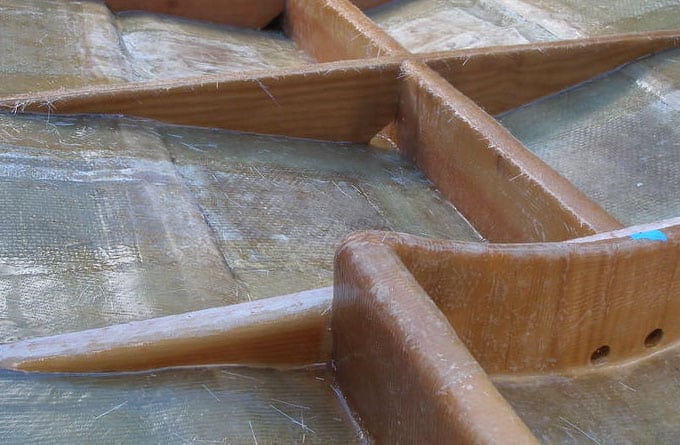
This is an example of molded or laminated boat stringers.
How do you know if your stringers need replacing?
There are a number of tell-tale signs that your boat stringers are in need of repair or might need replacing completely. These include:
1. Holes in the deck that have not been sealed
If you see gaps and holes in your boat deck that haven’t been sealed, it’s very likely that water will have got in and started to rot the stringers underneath.
Rotten stringers won’t last long, and you might start to see sagging on the deck, or areas that don’t feel secure.
2. Deck delamination
Deck delamination happens when the fiberglass cloth layers and resin start to come apart. It is a very common problem, and will only get worse over time, especially if you don’t get onto the repair quickly.
Water will start to get through and into the stringers, and they will often start to break apart. It’s more serious than a little water damage from an unsealed hole, as will often affect the entire stringer structure.
3. Brown spots on the stringers
When you inspect your stringers, the sight of brown spots is a sign that water is already in them, and it’s starting to seep out.
You will need to replace them and then properly gel coat them afterwards to reduce the chances of it happening again and rot getting into the new wood.
If your stringers are exposed to bilge water frequently, they will need to be replaced on a periodical basis. They will start to rot, even if they are made from good quality wood that has been water-treated.
Also look for staple marks. Water can get into these and rot the wood.
How to inspect boat stringers for damage
If you think you might have rotten or damaged stringers, you can lift up a hatch if you have one. However, not all boats are going to have this option, so you might have to cut an inspection hole into your deck.
Look for the tell-tale signs listed above for rot, or you might see fractures in the wood.
What to check for when buying a used boat
If you are buying a used boat, there are a number of visual checks you can make to get an idea on what shape the stringers are in.
1. Ask when the stringers were last replaced
Ask the seller when the stringers were last replaced. If the boat has been out on the water for years, it’s very likely that the stringers will have started to rot, particularly with a boat that hasn’t had a lot of maintenance.
2. Look at the bottom support of the boat
You can get an idea of what condition the stringers might be in with a visual inspection of the hull support structure, if it’s accessible.
You won’t be able to see into the laminate, but it will give you an indication on the quality of the construction.
3. Check for plywood in the stringers
All older boats used to use plywood frames which then had fiberglass hats placed over them. With used boats, find out whether the frame was made from plywood.
You want to know whether the plywood was entirely capsulated in fiberglass or not. If it wasn’t, water may have got in and started to rot the wood.
Check to see if there is any bare wood visible. Many boat builders might state that they have encapsulated the plywood, but this isn’t always the case.
Some boat builders use resin-painted fiberglass tape. The preferred construction will have the structured covered with a fabric first, to look the plywood in. This makes the stringers stronger and can prevent water getting into the wood.
4. Are there perforations in the grid?
Any wiring or plumbing routes should have been fully sealed up with resin. If you don’t see that and instead can see bare wood, it is a bad sign.
Questions to ask when buying a new boat
Newer boats from the mid-1990s onwards won’t have as many problems. The use of plywood for stringers is extremely uncommon now, with more water-resistant vinyl resins now used for lamination.
However, that’s not to say you should just take you’re the stringers for granted, with some due diligence still needed.
Ask your boat dealer the following questions:
- How robust and well-made are the boat stringers?
- How many stringers are there under the deck? The more the better.
- Are the boat stringers wide or narrow? Wider stringers offer better support.
- Are the stringers filled with a foam, or do they have a cavity? Flotation foam is better.
- Are the stringers molded in place or glued in?
How to repair or replace rotten boat stringers
Sometimes it can be easier to replace all the stringers than trying to replace just rotten parts of the structure.
You should also always use the same wood that the damaged stringers use. This will help to keep the balance of your boat correct, reducing any chances of damaging other areas of your boat.
Here is a very short guide on how to replace the stringers on a fiberglass boat.
- Clean and sand down the surfaces of your new stringers.
- Mark out the position of the old stringers so you know where to place the new ones.
- Remove the rotten stringer and core, making sure you don’t damage any hull laminate.
- Build and bond the core with a resin and hardener mix.
- Push the new stringers in and clean up any epoxy that squeezes out before it hardens.
- Replace the fiberglass hats or skin over the top.
The last word…
So there you have it. I didn’t know what boat stringers on a boat were, but now I do – and I hope you do too!

